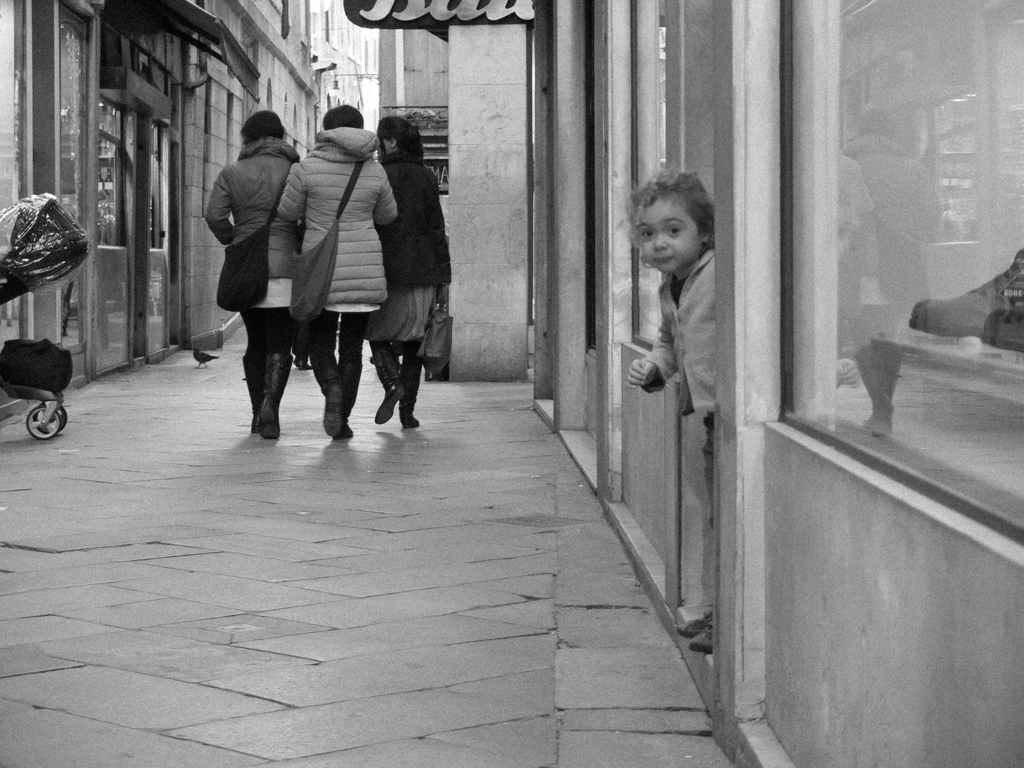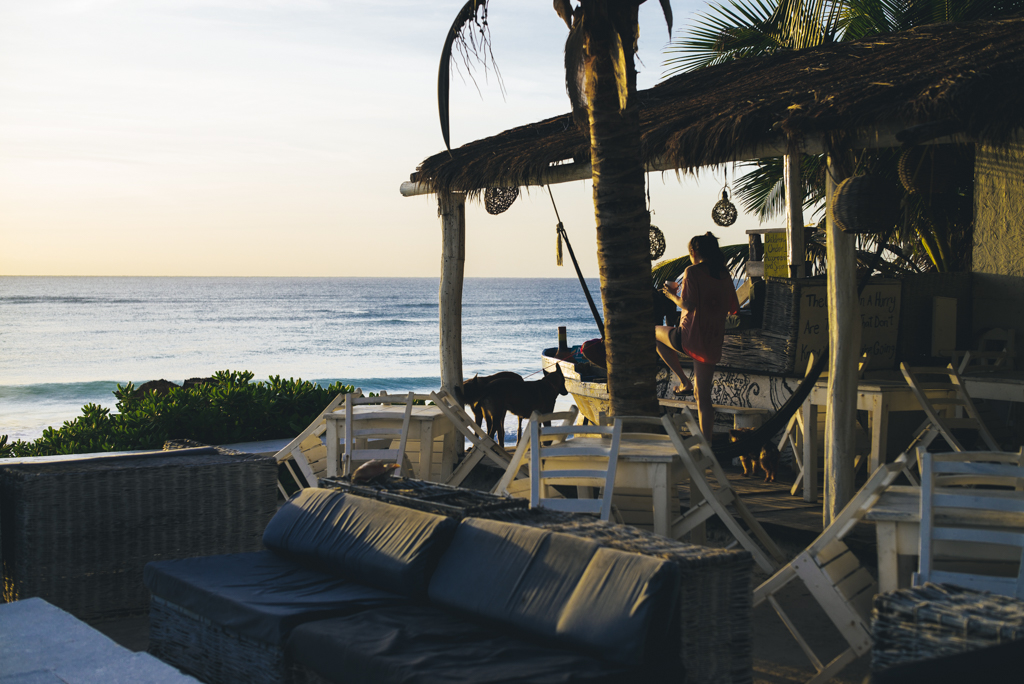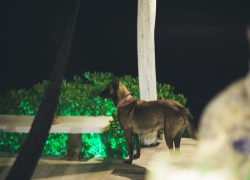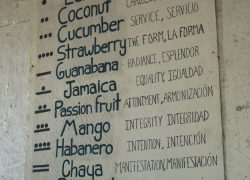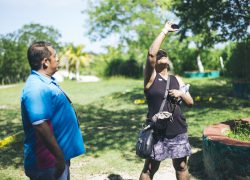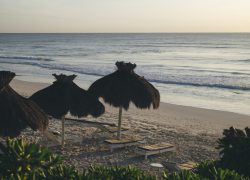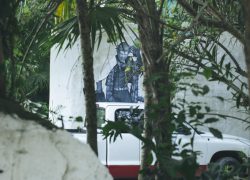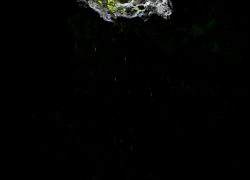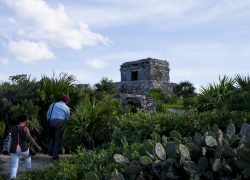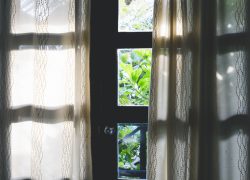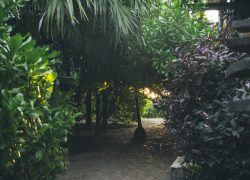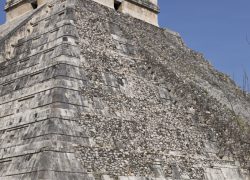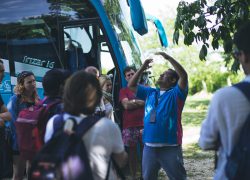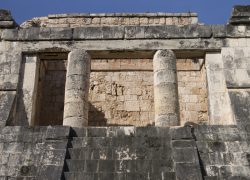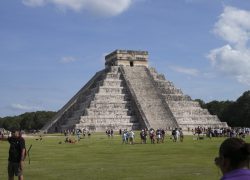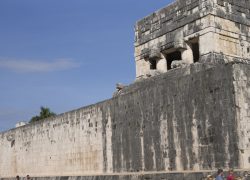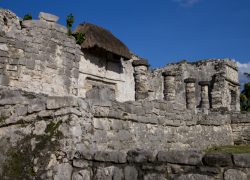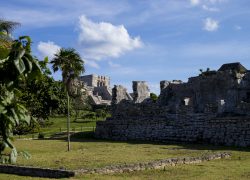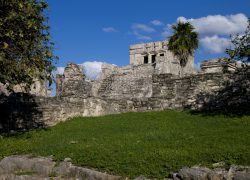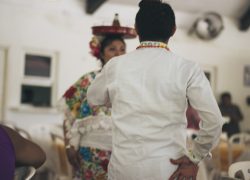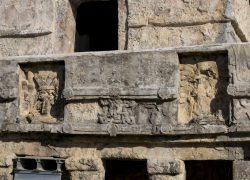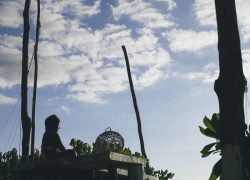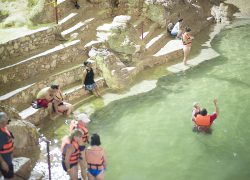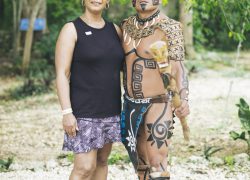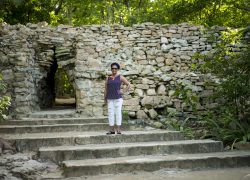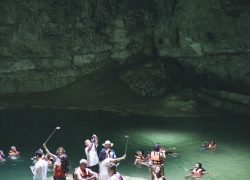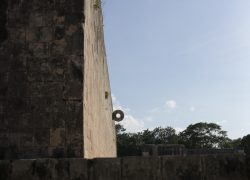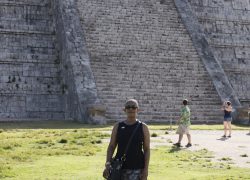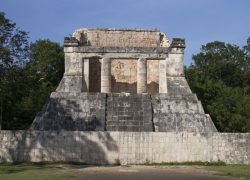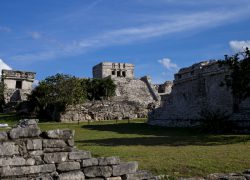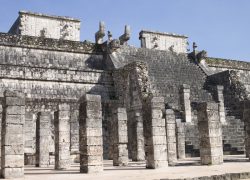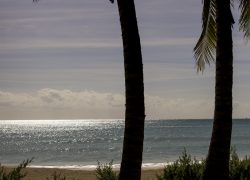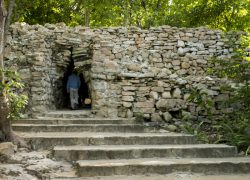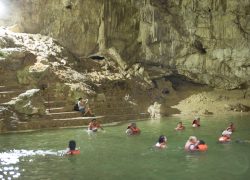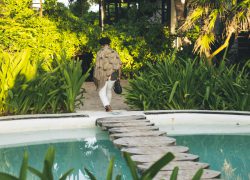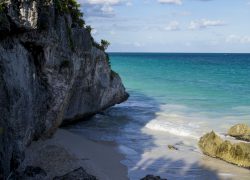I’ve always been fascinated with ancient civilizations. This fascination started around 11 years of age. Our recent vacations were centered around visiting ruins and connecting with our past (but mostly eating). My biggest obsession was with pyramids, especially after reading the book, published in 1976, titled Pyramid Power by Max Toth and Greg Neilsen<fn>It was in 1976 when I read it!</fn>. Though the pyramids of Giza were my primary focus, the Mayan pyramids held a different interest, based on their mathematical and astronomical connections.
I was going to attend a photo convention in New York City during my week vacation, but Carline persuaded me to go to Tulum with her. I’m glad I did.
We got to Tulum via a two-hour ride from Cancun airport. The ride (taxi, shuttle or private car by the hotel) would have cost us about $130 USD each way, but because we agreed to sit through a time-share presentation the following morning, our rides, to and from the hotel, were free (don’t judge us).
We stayed at Hotel Zulum (http://zulum-hotels.com), which is near the end of the Tulum strip, Carretera Tulum: a quaint set of beachfront bungalows stacked in twos to give either an ocean view (top bungalow) or a jungle view (bottom bungalow). In either case, the constant, soothing sounds of the ocean were prevalent. Inside the bungalow, you’ll find a bed hanging from the ceiling on four ropes, with a mosquito net, which didn’t seem necessary as there were no mosquitos in our room even while the windows were open. The room is very rustic: no amenities such as TV, mini bar, or refrigerator. But if relaxing and getting away from it all is what you want, Hotel Zulum fits the bill. The hotel manager, Mara, was kind, helpful, and very accommodating to our needs. Walking around the grounds at night requires a flashlight unless you are intimately knowledgeable of the topography. There’s also the resident donkey, Sancho, who, apparently, doubles as a rooster since I only heard him hee-haw in the mornings. Note the following: Sancho is friendly, so if you make eye contact, he’ll follow you. At least, that’s what he did with me. If you’d like to see Sancho, he’s got his own Instagram account (https://www.instagram.com/sanchothedonkey/). Not sure how he manages to take selfies, though.
The first morning, we skipped the hotel breakfast to go to our presentation where breakfast was waiting. After our presentation, we only had time to visit the ruins of Tulum. Like in Athens, we hired a tour guide to guide us through the ruins. Our Mayan guide, Tomas, taught us a few Mayan words, which we regretfully forgot most of them. We did learn that tulum means “wall”, which the ancient city was surrounded by<fn>Yes. Wikipedia has all this information, but there’s a lot of “local history” not found in Wikipedia as we found out later on</fn>. We saw some coati, but I didn’t take any pictures, for lack of interest since they didn’t seem interested in me either. After the ruins, we took a colectivo to El Camello Jr. restaurant where we had dinner and a mariachi serenade. Carline had the lobster there, and it was too big to fit on the plate! We higly recommend eating there.
We booked a tour (and we’re not “tour kind of people”) to Chichen Itza, for the following day. Chichen Itza was an all-day affair. We had purchased a “deluxe” package since it was cheaper than the regular one. It included a few perks, like breakfast and drinks throughout the tour. Our guides, Umberto, Alejandro, and Gabriel, were very informative and honest in their portrayal of their (Mayan/Yucateco) culture, mythology, and beliefs. As they spoke, I felt a strong connection; it felt familiar. Their stories and information were fascinating and it’s a tour I highly recommend. Prior to arriving at Chichen Itza, we stopped by a Mayan village where we dipped in a cenote and had lunch. Umberto demonstrated the healing stone and the Mayan “telescope”, which are both made of obsidian. I purchased one of each, so not only can I heal myself and look directly at the sun, I can ward off White Walkers when winter comes. Especially here in Boston!
Being in awe at the provided information still did not prepare me for the pièce de résistance: The Temple of Kukulkan. Seeing large structures on open fields always induces vertigo in me (my first experience was at six years old, with the Unisphere from the 1964 World’s Fair in New York), but this was the exception. Perhaps it was the giddiness or because I’m more mature now, but, regardless; I’m glad I didn’t faint. Carline and I expected to climb the temple, but it’s closed off because of a 2006 accident<fn>According to Wikipedia</fn>. So, like the Parthenon of Acropolis, I was denied touching the structure, thus completing the circle. But I wouldn’t trade both experiences for anything.
Our tour guide in the grounds spun a fascinating account of the temple and the surrounding structures including the Great Ball Court (which is depicted, inaccurately, in the DreamWorks Animation movie, “The Road to El Dorado”). After we left Chichen Itza, we made a quick stop at the town of Valladolid, at the center square where Parque Francisco Canton is found. After which, we were dropped off in Tulum where we had dinner at La Coqueta restaurant, before taking a taxi back to the hotel.
